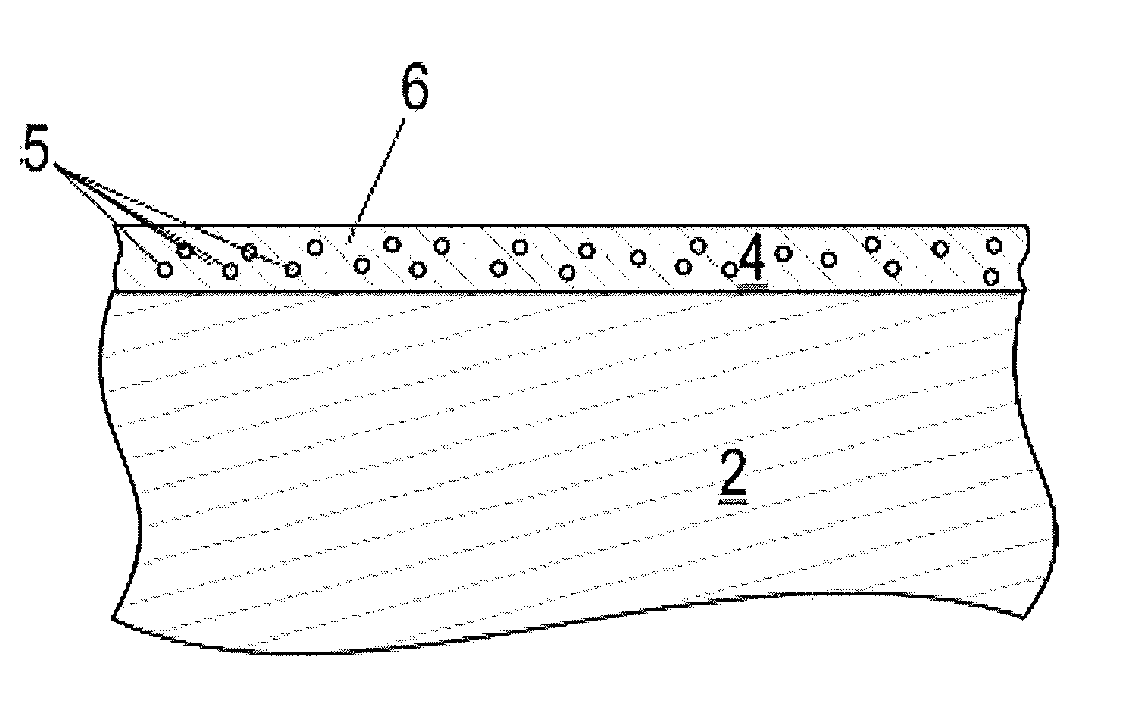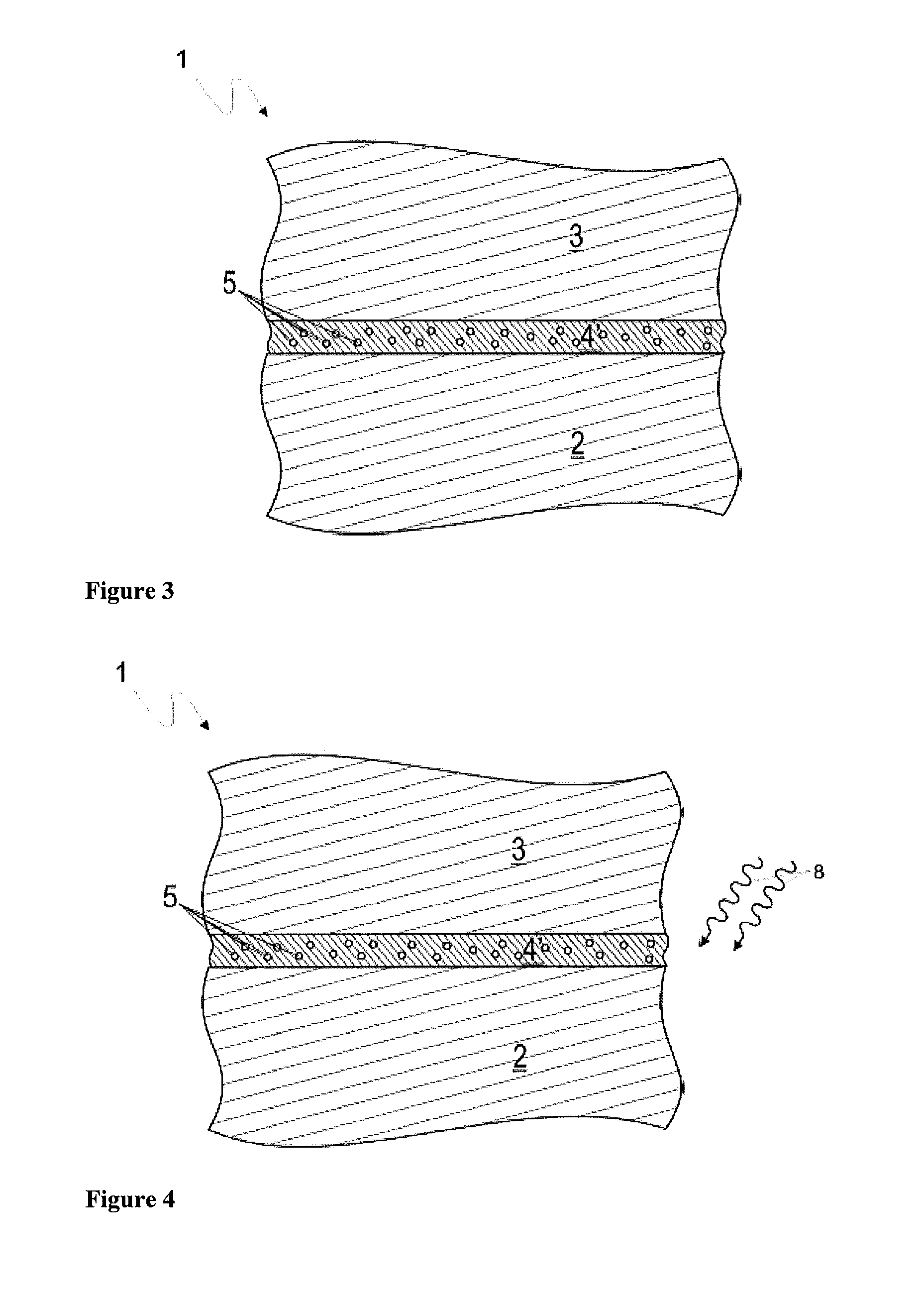Use of carboxylic acid hydrazide for de-bonding polyurethane adhesives
a technology of carboxylic acid hydrazide and polyurethane, which is applied in the direction of adhesive types, polyureas/polyurethane adhesives, lamination, etc., can solve the problems of insufficient compatibility of many of the above-mentioned additives such as amines, alcohols or sulfohydrazides with polyurethane polymers that have isocyanate groups, and shorten the shelf life of adhesives
- Summary
- Abstract
- Description
- Claims
- Application Information
AI Technical Summary
Problems solved by technology
Method used
Image
Examples
examples
[0231]A temperature of 23±1° C. and a relative atmospheric humidity of 50±5% are referred to as “standard atmosphere” (NK).
[0232]The ratio nHY / nNCO that is indicated in Tables 1 to 3 and 6 is in each case the ratio (nHY−nAK) / nNCO, whereby the value nAK is equal to zero since the polyurethane adhesives that occur in the examples do not contain or release aldehydes and ketones. Here, in each case, it is thus the ratio of the number of hydrazide groups to the number of isocyanate groups.
[0233]1. Carboxylic Acid Hydrazides that are Used[0234]Carboxylic acid hydrazide H-1 Adipic acid hydrazide Melting point about 180° C.[0235]Carboxylic acid hydrazide H-2 Isophthalic acid dihydrazide Melting point about 220° C.[0236]Carboxylic acid hydrazide H-3 Oxalic acid dihydrazide Melting point about 240° C.[0237]Carboxylic acid hydrazide H-4 Isonicotinic acid hydrazide Melting point about 171° C.[0238]Carboxylic acid hydrazide H-5 4-Nitrobenzhydrazide Melting point about 216° C.
[0239]The carboxylic...
examples 10 to 14
[0248]Just as described for Example 1, additional polyurethane adhesives were produced according to the information in Table 3 (quantity information given in parts by weight). The compositions of Examples 10, 11, and 12 correspond in each case to those of Examples 1, 2, and 3.
[0249]The polyurethane adhesives were thereupon cured, and after varying storage times, they were tested for Shore A hardness according to DIN 53505, as described for Example 5.
TABLE 3Composition and Results of Examples 10 to 14.Example1011121314Carboxylic Acid HydrazideH-1,H-2,H-3,H-4,H-5,1.21.40.81.92.5Sikaflex ® 221 White60.060.060.060.060.0nHY / nNCO1.41.41.41.41.4Shore A(7 d NK)4645493534(7 d NK + 7 d 80° C.)3944513634(7 d NK + 7 d 100° C.)3737461614(7 d NK + 7 d 120° C.)2142n.d.n.d.(7 d NK + 10′ 180° C.)413“n.d.” stands for “not determined”
[0250]It can be seen from Table 3 that the cured polyurethane adhesives of Examples 10 to 12, which contain dicarboxylic acid dihydrazides, have good permanence up to tem...
PUM
| Property | Measurement | Unit |
|---|---|---|
| Temperature | aaaaa | aaaaa |
| Temperature | aaaaa | aaaaa |
| Temperature | aaaaa | aaaaa |
Abstract
Description
Claims
Application Information
 Login to View More
Login to View More - R&D
- Intellectual Property
- Life Sciences
- Materials
- Tech Scout
- Unparalleled Data Quality
- Higher Quality Content
- 60% Fewer Hallucinations
Browse by: Latest US Patents, China's latest patents, Technical Efficacy Thesaurus, Application Domain, Technology Topic, Popular Technical Reports.
© 2025 PatSnap. All rights reserved.Legal|Privacy policy|Modern Slavery Act Transparency Statement|Sitemap|About US| Contact US: help@patsnap.com



